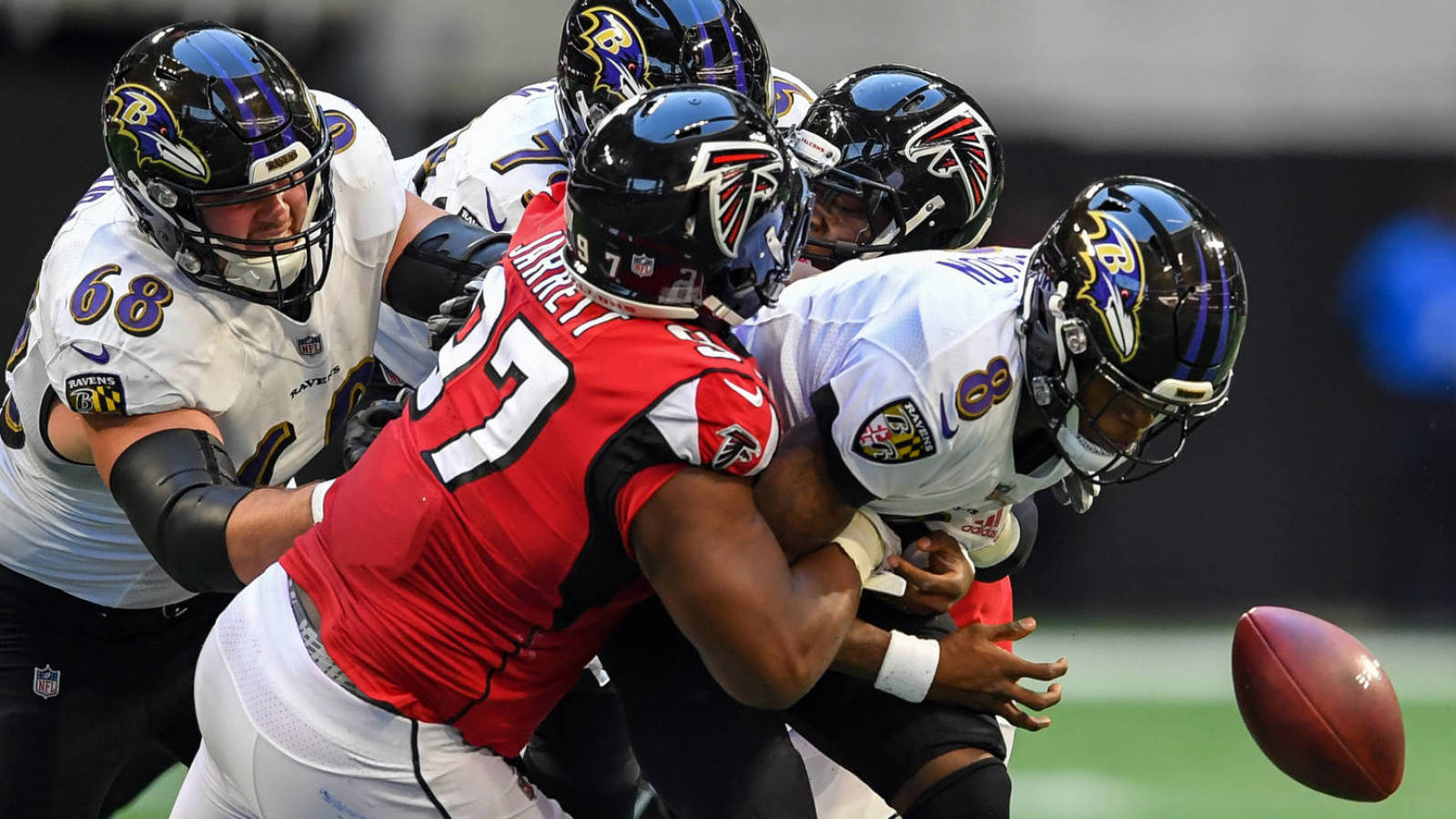
Lamar Jackson 2.0: How Ravens' second-year QB can raise his game
After backing up Joe Flacco to start the season, Baltimore started rookie Lamar Jackson after it fell to 4-5 in 2018. A Heisman Trophy winner at Louisville and No. 32 draft pick, he led the Ravens to a 6-1 finish and a surprising AFC North title.
QUARTERBACKS 2.0
- How Dolphins' Josh Rosen can get back on track
- Bills' Josh Allen must refine deep-ball passing
- Browns' Baker Mayfield must improve intermediate passing
- Jets' Sam Darnold must play better on road
- Lamar Jackson can improve as deep-ball thrower
Jackson showcased an impressive running ability -- he averaged an astonishing 79.4 rushing yards per game as a starter -- but his passing skills need refinement. His 58.2 percent completion percentage was well below the league average of 64.9.
Here's where he must improve:
Big-play passing
We know how electric Jackson can be with his legs, but he didn't produce much passing, especially on deep throws. In 2018, he threw only two touchdown passes from outside the red zone, tied for 35th in the NFL. Even if you extrapolated Jackson’s per-start average in that stat over 16 games, he’d still only produce about five TD passes. (The 4.6 figure would have ranked 26th in the league.)
Deep shots were simply not a featured piece of Jackson’s weaponry last season. He only completed five passes thrown over 20 yards downfield, tied for 36th in the league (30th if projected over 16 starts).
Altogether, only 7.6 percent of his pass attempts traveled at least 20 yards, the second-lowest total in the league among the 45 quarterbacks to attempt at least 10 deep passes. Only San Francisco's Nick Mullens took deep shots less frequently than Jackson.
Jackson can also improve as a passer near the goal line. In 2018, he threw a touchdown on only 14.2 percent of his red-zone passing plays (four TDs on 24 attempts and four sacks). It was the third-worst rate among the 38 quarterbacks with at least 20 red-zone passing plays last season, ahead of only Jimmy Garoppolo and Josh Allen.
Including his playoff start, Jackson threw only eight touchdown passes over his eight starts last season, a projection of 16 over a full season. That total would have ranked 27th in the league.

Ball security
Although he started only seven games, Jackson suffered from a severe case of "fumblitis." He fumbled 12 times, tied for most in the NFL, and lost five, fifth most in the league. In a wild-card loss to the Chargers, he fumbled three more times, losing one.
Jackson's average of 1.6 fumbles per game as a starter would put him on pace for 26 fumbles over 16 games -– a total that would surpass the league’s all-time record for fumbles by a quarterback in one season (Kerry Collins and Daunte Culpepper share the record of 23).
One doesn't need to be a football analyst to know that's problematic. Even though Jackson is bound to fumble the ball relatively often as a run-happy quarterback (his 147 rushing attempts were most ever by an NFL QB), he must secure the ball.
Play against top defenses
Jackson was fortunate to play awful defenses during his run as Ravens starter. Five of his eight starts were against teams ranked in the bottom seven in defensive DVOA , as Jackson squared off against the Buccaneers (32nd), Falcons (31st), Raiders (30th), Bengals (28th) and Chiefs (26th).
(Defense-adjusted value over average is a method of evaluating teams, units or players in a comparative fashion. It takes every single play during the NFL season and compares each one to a league-average baseline based on situation.)
Those opponents above came in Jackson’s first five starts. Each of his final three were against top-half defenses, with two games against the eighth-ranked Chargers (including the wild-card game) and one against the 12th-ranked Browns.
In the two games against the Chargers, the Ravens offense was stifled, posting its two lowest point totals under Jackson. Baltimore scored 16 offensive points in their first meeting against Los Angeles (a 22-10 victory) and 17 in the wild-card loss.
Not only did Baltimore’s offense have its lowest-scoring games under Jackson against the Chargers, but he had his worst rushing outputs against them as well. Jackson ran for 39 and 55 yards in his two games against Los Angeles, which deployed a unique defensive approach against Baltimore featuring extra defensive backs.
Jackson didn’t score a touchdown on the ground in either game against the Chargers. In fact, he recorded more fumbles (four) than total touchdowns (three), although only one of the fumbles was lost.
The game against Cleveland, a 26-24 Ravens win, was more successful. Jackson didn’t throw for a touchdown, but he ran for two and gained 90 yards rushing. The Ravens accumulated 463 yards in the win.
Can Jackson do enough to lead his offense to success against elite defenses? Because of the small sample size, we don't know for sure. In 2019, the Ravens will play eight games against teams that ranked in the top 16 in 2018 in DVOA: Buffalo, Pittsburgh (twice), New England, Cleveland (twice), Seattle, Houston.
More must-reads:
- Lamar Jackson has reportedly made 'huge strides' in training camp
- Why Ravens' 'unique' offense probably won't work
- The 'NFL MVP runners-up' quiz
Breaking News
Customize Your Newsletter
 +
+
Get the latest news and rumors, customized to your favorite sports and teams. Emailed daily. Always free!

